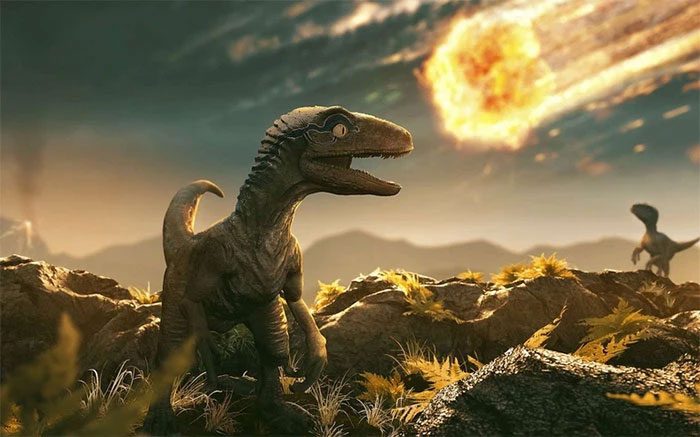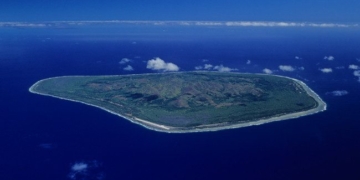About 66 million years ago, a gigantic asteroid, measuring 10-15 km in diameter, collided with the Yucatán Peninsula in Mexico, leading to a global catastrophe that wiped out about 75% of species on Earth and ended the age of dinosaurs.
The impact created the Chicxulub crater, which is approximately 180 km wide and 20 km deep. This event marks a significant moment in Earth’s history, signaling the end of the Cretaceous period.

This asteroid came from the outer solar system beyond Jupiter. (Illustrative image: AFP)
Recent studies have provided new insights into the nature of the impacting object. It has been identified that the asteroid responsible for this mass extinction event is a carbonaceous (C-type) asteroid, originating from the outer solar system beyond Jupiter.
The research published in the journal Science on August 15 indicates that this finding was determined through the analysis of the composition of debris from the impact.
The clay layer deposited on the surface is rich in metals such as iridium, ruthenium, osmium, rhodium, platinum, and palladium—all of which are rare on Earth but abundant in asteroids.
With these results, researchers were able to rule out other hypotheses that the impacting object could have been a comet or caused by volcanic activity.
According to geochemist Mario Fischer-Godde from the University of Cologne in Germany, who is the lead author of the study, scientists conducted a detailed analysis of the isotopic composition of ruthenium in the clay layer deposited on Earth’s surface.
Scientists explain that isotopes are atoms of the same element that have different masses due to varying numbers of neutrons.
Ruthenium has seven isotopes, with three particularly important isotopes having ratios that match those of previous carbonaceous asteroids. Scientist Steven Goderis from Vrije Universiteit Brussel (Belgium) stated that ruthenium is especially useful in this context because the isotopic signature in the clay is almost entirely composed of ruthenium from the impacting object, rather than from background sediments.
C-type asteroids are the most common and oldest type of asteroid in the solar system, primarily composed of carbon and other volatile substances.
The study suggests that this asteroid likely formed in the outer solar system, moved into the asteroid belt between Mars and Jupiter, and eventually headed towards Earth.
Scientists assess this as a rare collision, as impacts from other asteroids over the past 470 million years have mostly involved S-type asteroids, which are found closer to the sun.
The impact of the C-type asteroid set the stage for the rise of mammals and ultimately the development of humans, highlighting how significant cosmic events can dramatically alter the course of life on Earth.


















































